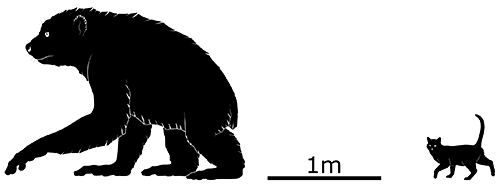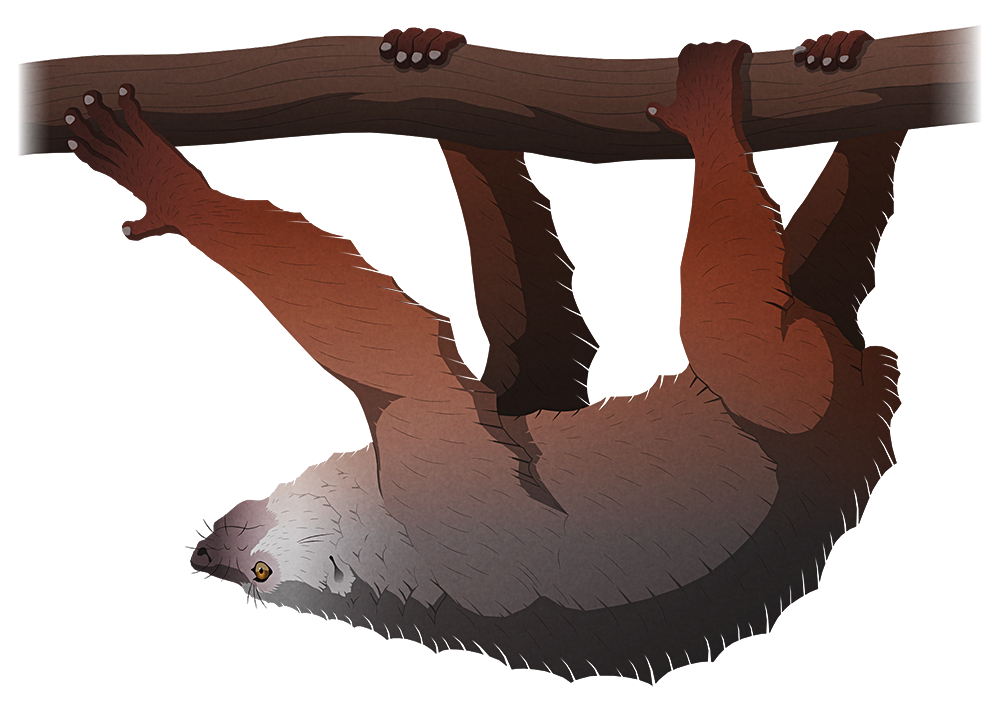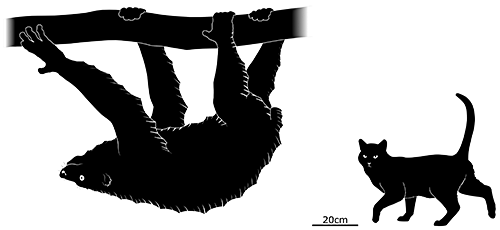The small and medium-sized sloth lemurs of Madagascar were incredibly convergent with modern tree sloths, and the biggest member of the group likewise seems to have been the closest they came to evolving a ground sloth equivalent.
Archaeoindris was the largest known lemur – and one of the largest primates – similar in size to a modern gorilla at about 1.5m tall (4′11″). It would have been a slow-moving animal which fed mostly on leaves, and while it was still capable of climbing around in larger trees it was probably much too bulky for upside-down suspension like its smaller relatives, and would likely have had to regularly traverse the ground to reach new feeding sites.
It seems to have been a fairly rare member of the ecosystem, living only in the Central Highlands, and the last known remains date to just over 2000 years ago – around the same time that humans first reached that area of the island. Sadly a combination of factors such as the giant lemurs’ slow reproductive rate, habitat loss, and hunting pressure was too much for their population to recover from all at once, and they probably went extinct very soon after that date.




